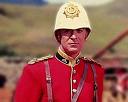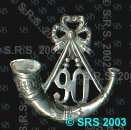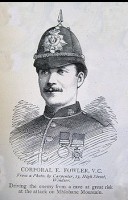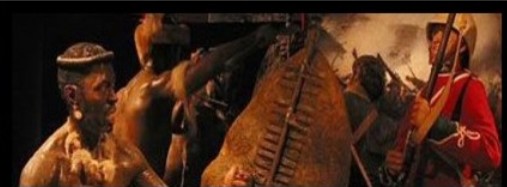| Latest topics | » The Pictorial World - March 15th 1879 Yesterday at 1:13 pm by ben2000 » The lost diary of Pvt James Owen Thu Jul 25, 2024 12:03 pm by miklew » Last of the 24th at Isandhlwana Wed Jul 24, 2024 6:16 pm by John Young » What was the uniform of field marshals/generals in the zulu war? Mon Jul 22, 2024 6:53 am by John Young » Henderson and the NNH at Rorke's Drift  Sat Jul 20, 2024 12:17 pm by SRB1965 » Capt. D. Hayes 1/3rd Regt., NNC Thu Jul 18, 2024 11:11 am by Julian Whybra » The Wrecked Camp Wed Jul 17, 2024 4:33 pm by Julian Whybra » Private N/N John Robert Branch 90th Regiment and his discovered diary Mon Jul 15, 2024 8:53 pm by 1879graves » Private John Scott 24th Regiment a fugitive at large Sun Jul 14, 2024 12:06 pm by 1879graves » 90th foot sgt T. Collins 214 Sun Jul 14, 2024 10:57 am by johnman » Baron Von Steitencron Wed Jul 10, 2024 3:10 pm by Julian Whybra » Sgt Joseph Windridge, Defender of Rorke's Drift - Memorial Tue Jul 09, 2024 3:15 am by 90th » Writing advice Sun Jul 07, 2024 4:04 pm by Julian Whybra » South Africa 1877-79, 1 clasp, 1877-8-9 (4389 Fr. Sergt. S. Smith. O/2. Bde. R.A.) Sun Jul 07, 2024 9:30 am by rai » The trashing of the Zulu monument to the brave warriors at Isandlawana March 12, 2024 has been blamed on scrap metal scavengers. Thu Jul 04, 2024 7:41 pm by ADMIN» The Goodwill Zulu Festival: Celebrating the Welsh and KwaZulu Natal Shared Heritage. Thu Jul 04, 2024 7:27 pm by ADMIN» Any nominal role of G Coy 2/24th regiment  Thu Jul 04, 2024 11:18 am by Wayne » Bassage Diary Thu Jul 04, 2024 9:31 am by Julian Whybra » Prior to Sihayo's Kraal  Thu Jul 04, 2024 9:19 am by 90th » British Fort Locations Thu Jul 04, 2024 3:40 am by 90th » Sergeant 1064 Tom Hick / Hicks G Company 2/24th Regiment Wed Jul 03, 2024 11:05 am by Julian Whybra » A Hungarian soldier in the Zulu War (?) Fri Jun 28, 2024 2:31 pm by Mr M. Cooper » Private 25B/279 Henry Sears Bugler E Company 24th Reg. KIA Isandlwana Thu Jun 27, 2024 1:07 pm by gardner1879 » Hamilton Browne's birthday Fri Jun 21, 2024 9:22 am by Julian Whybra » Zulu "Corps" Thu Jun 20, 2024 6:01 pm by Hobbes » Army Pay Department Personnel Thu Jun 20, 2024 11:49 am by Julian Whybra » Ntshingwayo birth date Sun Jun 16, 2024 11:37 am by Hobbes » Zibhebhu and Cetshwayo's family Wed Jun 05, 2024 9:11 pm by Julian Whybra » Smith's Store/Hotel Wed Jun 05, 2024 6:06 pm by Julian Whybra » Corporal James Frowen Williams F Company.  Tue Jun 04, 2024 5:20 pm by Julian Whybra » Shaka iLembe Sat Jun 01, 2024 1:27 pm by Jon84 » Bugler 1415 Thomas Finn / Flin 90th Regiment  Sat May 25, 2024 11:28 am by johnman » Inspector-General Evelyn Richard Hugh Pollard Tue May 14, 2024 10:13 am by ADMIN» Alfred Fairlie Henderson photographs. Sat May 11, 2024 8:01 am by Julian Whybra » Fairlie's Native Police Thu May 02, 2024 9:12 pm by Hobbes |
| July 2024 | | Mon | Tue | Wed | Thu | Fri | Sat | Sun |
|---|
| 1 | 2 | 3 | 4 | 5 | 6 | 7 | | 8 | 9 | 10 | 11 | 12 | 13 | 14 | | 15 | 16 | 17 | 18 | 19 | 20 | 21 | | 22 | 23 | 24 | 25 | 26 | 27 | 28 | | 29 | 30 | 31 | | | | |  Calendar Calendar |
|
| Top posting users this month | |
| New topics | » The Pictorial World - March 15th 1879 Yesterday at 1:13 pm by ben2000 » The lost diary of Pvt James Owen Thu Jul 25, 2024 12:03 pm by miklew » Last of the 24th at Isandhlwana Wed Jul 24, 2024 5:53 pm by miklew » What was the uniform of field marshals/generals in the zulu war? Sun Jul 21, 2024 12:30 pm by darthvaix » Henderson and the NNH at Rorke's Drift  Fri Jul 19, 2024 1:29 pm by SRB1965 » Capt. D. Hayes 1/3rd Regt., NNC Wed Jul 17, 2024 10:52 pm by Julian Whybra » The Wrecked Camp Sun Jul 14, 2024 8:51 am by 61MECH » The trashing of the Zulu monument to the brave warriors at Isandlawana March 12, 2024 has been blamed on scrap metal scavengers. Thu Jul 04, 2024 7:41 pm by ADMIN» The Goodwill Zulu Festival: Celebrating the Welsh and KwaZulu Natal Shared Heritage. Thu Jul 04, 2024 7:27 pm by ADMIN |
| Zero tolerance to harassment and bullying. | |
Due to recent events on this forum, we have now imposed a zero tolerance to harassment and bullying. All reports will be treated seriously, and will lead to a permanent ban of both membership and IP address.
Any member blatantly corresponding in a deliberate and provoking manner will be removed from the forum as quickly as possible after the event.
If any members are being harassed behind the scenes PM facility by any member/s here at 1879zuluwar.com please do not hesitate to forward the offending text.
We are all here to communicate and enjoy the various discussions and information on the Anglo Zulu War of 1879. Opinions will vary, you will agree and disagree with one another, we will have debates, and so it goes.
There is no excuse for harassment or bullying of anyone by another person on this site.
The above applies to the main frame areas of the forum.
The ring which is the last section on the forum, is available to those members who wish to partake in slagging matches. That section cannot be viewed by guests and only viewed by members that wish to do so. |
| Fair Use Notice | | Fair use notice.
This website may contain copyrighted material the use of which has not been specifically authorised by the copyright owner.
We are making such material and images are available in our efforts to advance the understanding of the “Anglo Zulu War of 1879. For educational & recreational purposes.
We believe this constitutes a 'fair use' of any such copyrighted material, as provided for in UK copyright law. The information is purely for educational and research purposes only. No profit is made from any part of this website.
If you hold the copyright on any material on the site, or material refers to you, and you would like it to be removed, please let us know and we will work with you to reach a resolution. |
| | | Medical Report of 5 of the Wounded at Rorke’s Drift |  |
| | | Author | Message |
|---|
Guest
Guest
 |  Subject: Medical Report of 5 of the Wounded at Rorke’s Drift Subject: Medical Report of 5 of the Wounded at Rorke’s Drift  Thu Jul 28, 2011 8:56 pm Thu Jul 28, 2011 8:56 pm | |
| (Taken from “Surgical Experiences in the Zulu and Transvaal Wars,
1879 and 1881,” by D. Blair Brown, F.R.C.S. Edin., Army Medical
Department)
“CASE I.—NO. 1362, Private F. H., of the 2nd 24th regiment, was hit,
during the defence of Rorke's Drift, in the right shoulder. The bullet
entered near the base of the scapula, having been fired from the
hills opposite to which he was fighting. The bullet made its exit over
the bicipital groove in the humerus. There was great swelling of the
whole shoulder when seen by me on the 26th of January 1879, and
ecchymosis. The tract of the wound was sloughing. Poultices and
cold water sufficed to allay this, and the case did well.”
“CASE II.—Corporal C. S., of the 1st battalion 2nd Co. Natal Native
Contingent, was wounded at Rorke's Drift. The bullet hit the back of
the head at the posterior margin of the left sternomastoid at its
origin, and took a course towards the middle of the scapular base,
where the bullet lodged subcutaneously, from which position it had
been removed when I took charge of him on the 26th January. Here
also the whole shoulder was greatly swollen and painful, requiring
poultices. This case, after the usual slough came away, got well.”
“CASE III.—No. 1240, Corporal W. A., of the 2nd 24th regiment, was
hit, at Rorke's Drift, in the right shoulder. The bullet entered near the
insertion of the deltoid muscle to the humerus, and made its exit at
the upper and inner angle of the scapula. The bullet appears to have
passed under the scapula, no bone or joint being touched. This
wound sloughed and then very rapidly healed up.”
“CASE IV.—Acting Assistant-Commissary D. was hit in the right
shoulder at Rorke's Drift when busily engaged forming the "laager,"
which he had originally commenced, and to which was due the safety
of the place. The bullet entered about half an inch above the middle
of the clavicle, and made its escape posteriorly at the lowest border
of the trapezius muscle. The course taken was curious, regularly
running round the shoulder and down the back, escaping all the
important structures. The wounds, like all those received at Rorke's
Drift, were wide and open and sloughing when seen by me on the
26th January. After the slough came away the usual tenax was
applied. The whole of the field medical equipment having been
captured by the enemy at Isandhlwana, I had no antiseptic to use. I
thought of quinine, which I knew was a wonderful preserver of animal
tissues, and used a solution of that, experimenting in this case. It
seemed to answer, as the wounds got well after being injected
several times with it. My subsequent experience, however, is that the
wound would have done as well without it.”
“CASE V.—No. 447, Private J. W., of the 1st 24th regiment. This man
had been left behind by his regiment (the one annihilated at
Isandhlwana), as he was fulfilling the duties at Rorke's Drift of an
hospital orderly. During the fight he was hit in the right shoulder. The
bullet entered the deltoid muscle about its lower third anteriorly, and
lodged opposite the surgical neck of the humerus posteriorly, where
it had been cut out. On probing this wound no bone was felt, and
after the usual sloughing it healed. In every case the projectile found
was an ordinary round one, and the nature of the injuries tend to
show that they were all produced by similar bullets.”
Petty Officer Tom
|
|   | | 24th

Posts : 1862
Join date : 2009-03-25
 |  Subject: Re: Medical Report of 5 of the Wounded at Rorke’s Drift Subject: Re: Medical Report of 5 of the Wounded at Rorke’s Drift  Fri Jul 29, 2011 1:27 pm Fri Jul 29, 2011 1:27 pm | |
| Tom. I'm fairly certain, that one of the defenders and some kind of instrument left inside him after an operation to remove a bullet, The wound be came infected which led to his death. (Could be wrong) |
|   | | Guest
Guest
 |  Subject: Re: Medical Report of 5 of the Wounded at Rorke’s Drift Subject: Re: Medical Report of 5 of the Wounded at Rorke’s Drift  Fri Jul 29, 2011 2:46 pm Fri Jul 29, 2011 2:46 pm | |
| 24th, I had not heard that one before. It would not be uncommon for a wounded soldier to later die from an infection after surgery. A bullet passing through a uniform often takes a piece of the cloth with it into the wound. The bullet is later removed, but the piece of cloth, with its filth and germs, is left behind, and the result is infection. Not to mention, surgery was not always performed in a sterile environment. A little research on each of the Rorke's Drift wounded may lead to the identity of the soldier to whom you have refered. Here is the link to Doctor Brown's book: [You must be registered and logged in to see this link.]Petty Officer Tom |
|   | | 90th

Posts : 10890
Join date : 2009-04-07
Age : 68
Location : Melbourne, Australia
 |  Subject: medical Report of 5 Wounded at R.D. Subject: medical Report of 5 Wounded at R.D.  Sat Jul 30, 2011 1:19 am Sat Jul 30, 2011 1:19 am | |
| Hi Petty Officer Tom / 24th. I've posted some of the entries from Dugald Blair Brown's book a fair while ago but not sure where ! I do seem to recall something along those lines where a wound did get infected in that way . cheers 90th.  |
|   | | littlehand

Posts : 7076
Join date : 2009-04-24
Age : 55
Location : Down South.
 |  Subject: Re: Medical Report of 5 of the Wounded at Rorke’s Drift Subject: Re: Medical Report of 5 of the Wounded at Rorke’s Drift  Sun Jul 31, 2011 6:06 pm Sun Jul 31, 2011 6:06 pm | |
| Click Here: Surgical Experiences in the Zulu And Transvall Wars 1879 and 1881 |
|   | | | | Medical Report of 5 of the Wounded at Rorke’s Drift |  |
|
Similar topics |  |
|
| | Permissions in this forum: | You cannot reply to topics in this forum
| |
| |
| |
